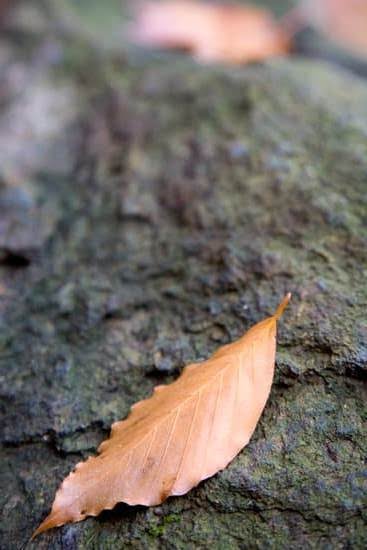Introduction
Chinese New Year is a festive celebration held to honor the start of the lunar new year. It is intended to bring luck and prosperity for the coming months and is celebrated in many countries around the world. Throughout China, people spend weeks feasting and celebrating with family, friends, and neighbors. Over its history, Chinese New Year has changed greatly. It was initially celebrated for two weeks but due to popular demand has grown into a much longer holiday. During this time Chinese culture is embraced through various activities such as attending temple ceremonies, exchanging gifts, firework displays, lighting red lanterns, hanging couplets of poetry on doorways and windows, as well as consulting with Feng Shui experts to design decorations that are best suited for each household.
Feng Shui is an ancient Chinese philosophical system of harmonizing everyone with the surrounding environment by manipulating design elements so that positive energy or “chi” circulates freely throughout spaces. According to Feng Shui tradition during Chinese New Year people decorate their homes so that wealth and good fortune accumulates in their lives by employing the principles which governs Feng Shui. People incorporate colorful objects such as flowers with auspicious meanings, vibrant plants that signify growth, lucky bamboo stalks which create financial wealth, mirrors that protect energy from leaving your home and many other decorative items intended to bring about fortune for the new year ahead.
Understanding the Principles of Feng Shui
Feng Shui is an ancient Chinese system which helps people to harmonize their lives with their environment. The main goal of Feng Shui is to maximize the energy flow in a space to promote peace, prosperity and health. In Chinese New Year celebrations, many families follow Feng Shui practices in order to bring good luck and happiness into their homes.
The principles of Feng Shui are based on the five elements—wood, fire, earth, metal, and water. Each of these elements has its own unique qualities which can affect its surroundings. In order to make sure that the energy flow in a home remains balanced, it is important that all five elements are present and kept in balance with each other.
Before undertaking any Feng Shui projects around the house during Chinese New Year celebrations, it is essential that homeowners understand the basics behind this practice:
1- Understanding Yin-Yang: Yin-Yang represent two opposing forces which work together to bring balance into a space. It is essential that even when decorating for Chinese New Year celebrations; people take as well as giving Ying- Yang into consideration so that positive vibrations can be generated and conflict between family members avoided.
2- Placement: Many believe that strategically placing furniture pieces or decorations in certain areas can help attract wealth, luck and wellbeing into a home or business place. In order to successfully apply the principles of Feng Shui during your Chinese New Year decorations; research the placement of items appropriately based on the type of energy you want to attract and achieve desired outcomes with ease.
3- Color Theory: Certain colors can create different atmospheres so using appropriate hues when decorating for your family’s new year celebration is extremely important. Each color has its own significance so being knowledgeable about how they interact with one another and what emotions they evoke when combined can be helpful if you wish to bring joyful vibes into your household during this special time of year.
Practices to Incorporate Feng Shui to Celebrate Chinese New Year
1. Decorate your home with red and gold items. According to the principles of feng shui, the color red symbolizes celebration and prosperity while gold symbolizes wealth, success, and fortune.
2. Place an image of a dragon – the sign of power – in your home in an area that corresponds to success in your life.
3. Rearrange furniture in order to create more positive energy balance for the new year ahead. Do this by ensuring that pieces are not crowded together and clutter is cleared away from any open doorways or windows.
4. Hang crystal chimes at your entry doors or other key areas to ward off bad luck and bring good fortune into the home and family during Chinese New Year celebrations.
5. Place arrangements of oranges and mandarin tangerines around the house as they signify abundance, joy, prosperity, good luck and health in Chinese culture according to feng shui practices. The number three is believed to be particularly lucky so aim for groups of 3, 6 or 9 oranges/tangerines when arranging them for maximum essence in terms of good luck for yourself throughout 2020!
6. Make sure you keep all pathways leading up to your door clear as this will allow qi (or positive energy) and auspiciousness move freely through your home on Chinese New Year’s Day bringing positivity across all members of the household going forward into 2020!
Specific Traditions to Enhance the Positive Energy of Feng Shui
One of the most popular Chinese New Year traditions that involve Feng Shui is to clean the house in preparation for the new year. This practice is said to sweep away negative energy and make room for good luck. Additionally, it is also common to hang decorations such as red lanterns and banners around the house during this time, as they are regarded as symbols of luck. It is also important to ensure that your furniture is positioned correctly according to Feng Shui standards; such as keeping couches away from the front entrance and having some form of decoration in each corner of a home. On top of traditional cleaning, it is essential to declutter and discard any broken or unused items which are seen as bad luck by many believers.
Feng Shui practitioners suggest bringing prosperity into the home by decorating with symbollike pieces, such as carp streamers (also known as ‘Dragon Tails’), coins or Maneki-neko cats – all said to bring good luck into one’s life and increase wealth. Furthermore, filling up various vessels with rice, water and tea can create a strong representation of abundance and fullness in the home— indicative that everything will be fulfilled this new year ahead. As part of this custom, offering fruit platters throughout one’s residence is also believed to welcome in positive energy and good fortune upon arrival!
Decorations to Enhance Connection and Balance
Chinese New Year is a time to foster connection—to family, culture and community. To embrace the holiday, Chinese people often focus on Feng Shui, a practice used to enhance balance and harmony in the home. Traditional decorations for Chinese New Year include red lanterns strung up outside. Red is seen as a lucky color in Chinese culture, representing prosperity and joy. In addition to lit-up lanterns, many families also display traditional calligraphy pieces with words such as wealth or good fortune hanging in an entryway or living room area. Other decorations such as peach wood carvings are placed near windows and by doorways to bring lasting good luck into the home. Additionally, money wrapped in red envelopes is given as gifts amongst family members as a sign of appreciation and goodwill. Furthermore, food plays an important role during festivities; families come together to enjoy dishes like dumplings, fish and nian gao (a type of sweet rice cake). All of these food items have special cultural meanings related to wealth and fertility for the coming year ahead.
Rituals in Connection to Feng Shui for the New Year
In the Chinese culture, many of the customs and traditions surrounding new years are based on Feng Shui principles. On New Year’s Eve, families will put up red decorations to symbolize wealth and prosperity throughout the upcoming year. People also clean their homes thoroughly and make sure everything is properly arranged according to Feng Shui rules in order to ensure an ideal flow of positive energy throughout the home. Additionally, good luck charms can be hung from doorways or windows as a way of protecting the property from bad fortune. During Chinese New Year’s Day, people tend to wear new clothes to bring about a fresh start for the new year. Other traditional activities include giving money (in red envelopes) as well as offering firecrackers and other symbolic items as gifts. These activities all reflect a commitment to encouraging blessings for joyous occasions and expressing gratitude for good luck in the years ahead.
Conclusion
The Chinese New Year is a very special holiday, and Feng Shui traditions add to the enthusiasm and celebration of the season. Even in a traditional Chinese home, decorations are hung up according to Feng Shui principles, allowing good luck and fortune to enter the home and bring harmony to all those living within. This brings an extra bit of fun and excitement to the holiday season as well as how it affects each individual in their own lives.
The energy brought by these beautiful Feng Shui decorations are intended to drive away negative energies that could potentially harm various aspects of life such as health, wealth, family, relationships, etc. It is said that red décor items represent positivity and should be placed prominently around the house at this time every year in order for positive Qi energy to flow more freely throughout the holidays. Also, festive items like bells and drums can be used to symbolize bringing good luck into the home for an auspicious start for the upcoming year.
Overall Chinese New Year is not complete without incorporating Feng Shui traditions into your celebrations. Every piece has its own meaning and importance, bringing people together during this particularly joyous period while embracing cultural values that have been passed on from generation to generation. In addition, it allows individuals to actively seek out luck in many ways that will help them grow mentally, emotionally, spiritually and financially throughout their lives.

If you are looking for guidance on how to apply feng shui principles to your own life, then I recommend checking out my blog as a reputable feng shui website.





